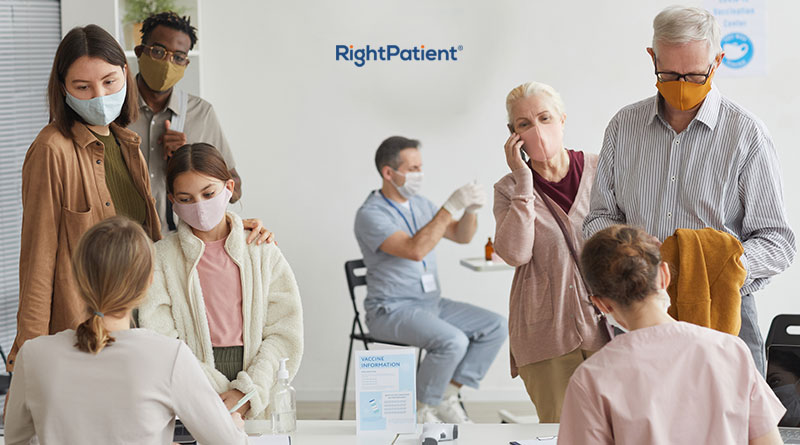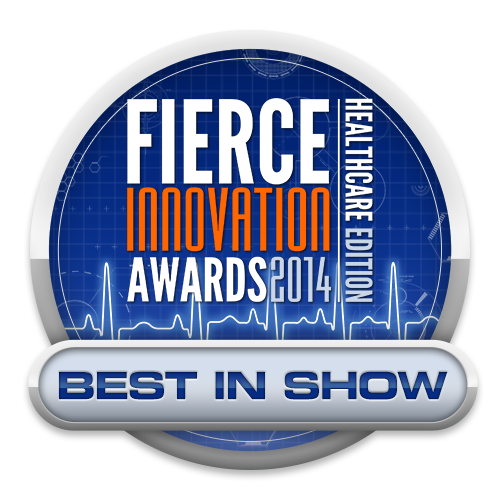Voice Assistants: New Technology in Healthcare

The following guest post on voice recognition technology in healthcare was submitted by Kate Voss.
The capacity for speech is one of the greatest tools that humans possess, yet most of the healthcare field still operates on the written word and on conventional keyboard-and-mouse computer interfaces. With voice recognition technology appearing poised to break through in the healthcare industry, however, that may finally be changing. Once viewed as a novelty and an unnecessary burden, voice control has already begun to prove its ability to offer greater efficiency, reduce common errors and improve patient engagement.

Voice biometrics is helping to improve patient engagement in healthcare.
The Rise of Voice Recognition
Voice recognition has been around in some form or another since the 1950s, but it’s only in the past half-decade or so that the technology has reached the mainstream. Artificial intelligence systems such as Apple’s Siri and Amazon’s Alexa have taken the tech world by storm, taking on the role of digital assistants and integrating voice control into everything from Internet-enabled thermostats to alarm sensors for children and the elderly. This rise has been fueled in part by rapid improvements in voice recognition technology, driven by advanced machine learning and increasingly sophisticated algorithms that have made voice recognition quicker, more responsive and – most importantly – more accurate than ever before.
Voice Recognition in Healthcare
The medical field as a whole has been hesitant to embrace the technology of voice recognition, but early adopters have already begun to reap the rewards. Accurate speech-to-text programs have shown the ability to transcribe physician’s’ notes more accurately than the average human medical transcriptionist, and voice recognition models offer a method for reducing all-too-common issues with illegible handwriting and insufficient documentation of procedures. If adopted on a more widespread level, these factors may facilitate the creation of more accurate, comprehensive and cost-effective electronic health records. Additionally, voice recognition can be used to build more secure data access systems as part of a biometric single sign-on platform.
Boosting Patient Engagement
Though much of the focus on voice recognition in the healthcare industry is on developing technologies to aid providers directly, it only represents one side of the coin. Patient engagement also benefits from such technology, particularly in the form of a conversational user interface. Surveys have indicated that some people feel more comfortable when speaking to a computer than when speaking to a human, leading them to share more readily and provide more detailed information. The ability to simply speak rather than navigating complex websites and apps means that more people can engage with and take a more direct role in their health and treatment. Many older patients, in particular, are able to use voice commands to do things they may otherwise be unable to do because of a lack of computer skills, arthritis, poor eyesight or other conditions.

The Future of Voice Recognition
As vocal recognition technology continues to mature and becomes more widely adopted, the level of integration both in daily life and in the medical field will likely increase. Experimental pilot programs have already leveraged devices like the Amazon Echo to provide post-discharge information for patients, answer common health questions and manage basic needs like transportation and medication scheduling. Features like this may become common practice in the future, providing patients with a more informative and engaging healthcare experience. Voice recognition is also likely to take on a more expanded role in the daily routine of healthcare providers as well, potentially making the laborious human transcription process and paper-based records a thing of the past as speech recognition becomes even more accurate and reliable.
Though security, reliability and logistical challenges remain, vocal recognition appears to be the wave of the future in healthcare. In a field that is so highly dependent on timely, accurate documentation – and a field in which, according to a 2006 report by the National Academies of Science’s Institute of Medicine, illegible handwriting causes more than 7,000 unnecessary deaths per year – the ability to quickly and precisely transcribe information is invaluable. Widespread adoption could slash operating costs and eliminate a significant burden on healthcare workers, allowing them to see more patients and focus on delivering high-quality care.
Kate Voss is a freelance tech and science writer with a strong interest in the development of voice control interfaces and their use in healthcare. A graduate of Michigan State University, she is now based in the Windy City of Chicago, IL.







Great Technology